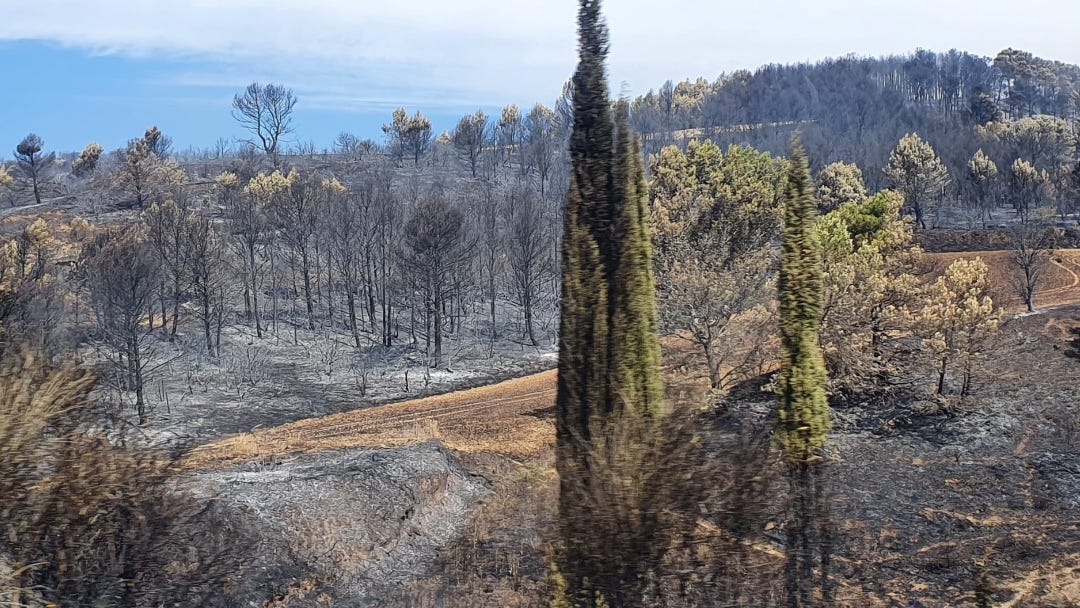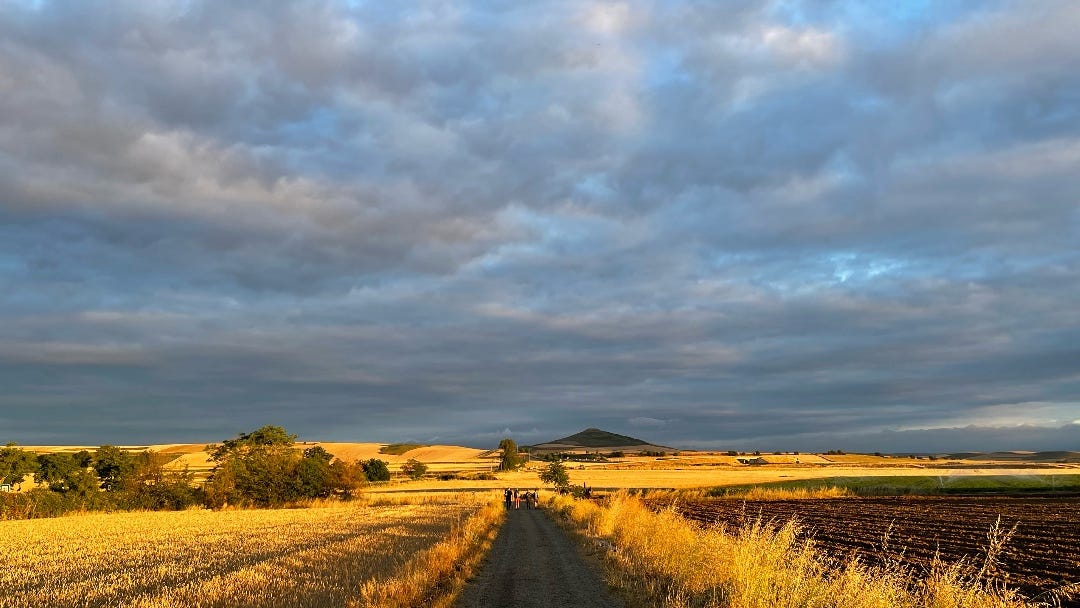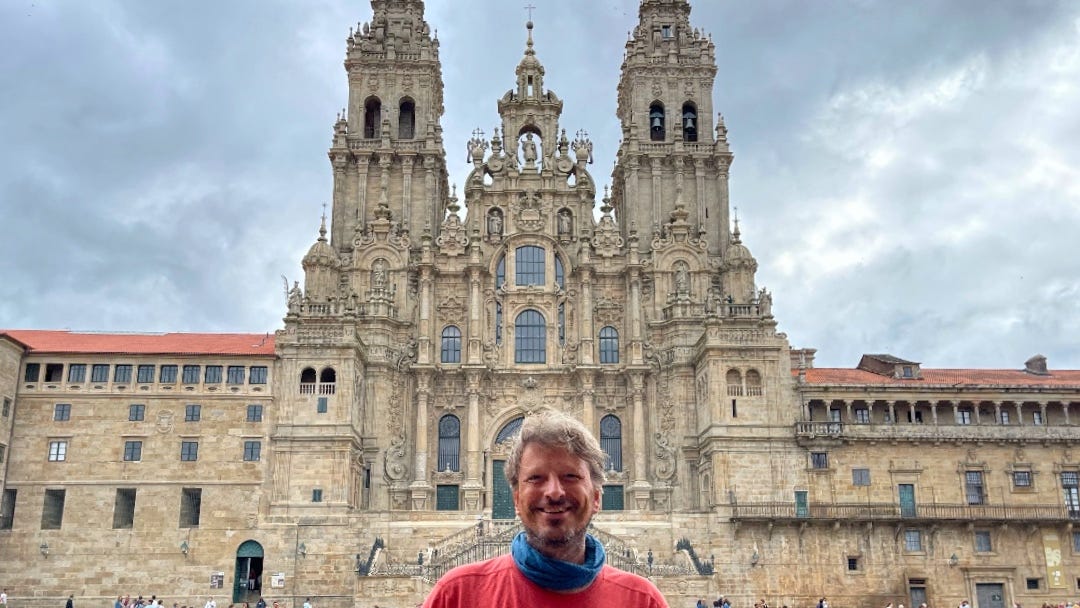In the past two summers, I embarked on a walking experience totaling some 1500 kilometers across Europe, a continent rapidly becoming a hotspot for the consequences of global warming. Europe is the fastest-warming inhabited continent, where last summer, the temperatures were a shocking 2.3 degrees Celsius warmer than in the preindustrial era.
When I dived into the numbers published by the World Meteorological Organization and the Copernicus Climate Change Service, I thought about my memories of that summer. My first crossing of the Pyrenees mountains was during a scorching heatwave. In a pattern we have seen often before in many places worldwide, the combination of heat and drought created fertile ground for wildfires. It didn't take long before massive fires erupted, making it impossible to continue my walk to Logrono.
The authorities didn't allow me or any other pilgrim to continue past Pamplona on their way to Santiago de Compostela. So within days, this historic city, where I had seen my first pilgrims years ago, filled up with more and more pilgrims who had crossed the mountains into Spain and wanted to continue walking to the west. I then took a bus to Logrono and resumed my long hike.
Back then, I missed the bigger picture, unaware of the mounting human toll in Europe from the relentless heat; I doubt anybody knew then. Heat-related deaths don't show up in the media until scientists aggregate substantial data on people dying out of public sight. An airplane crash with a hundred victims will get far more attention than the many thousands of heat-related deaths in Europe. Even among the scientific community, there's divergence in the numbers. The WMO/Copernicus report mentions 16,000 such deaths, while the journal Nature Medicine concluded only a month later that a staggering 61,672 people had died heat-related deaths in Europe in summer 2022.
The latest report mentioned Spain as one of the hardest-hit countries, with just over 11,000 deaths. I know that at least one of those was a fellow pilgrim who died of heatstroke. The tragic incident occurred just a day away from where I was walking, and the sad story quickly spread along the Camino. I remember followers on Twitter sending me more information and urging me to be careful.
Continuing my westward trek, I remember how the air filled with smoke and visible small particles; I couldn't see the more dangerous minuscule particles but knew they were there. Days later, once I had passed the Meseta, the part of the Camino Frances renowned for its flat, desolate, and exceedingly hot conditions, I woke up one night in a room filled with smoke from the forest fires. I had left the window open, trying to gain some cooling in the hot night. Still, once I woke in the smoke-filled air, I realized I had no other option but to close the window and sleep in the heat and smoke while wearing an N95 mask that I had brought with me since we were still dealing with another global crisis: the COVID19 pandemic. After sleepless hours, I rose in the dark, searched on my iPhone for an area with cleaner air, and did what pilgrims do: I walked to that brighter spot on the air-quality map, guided by the light of my headlamp.
These challenges wrought by climate change are not just threatening our health; they threaten every facet of our existence and will redefine every aspect of our lives. For those readers mainly interested in the economy, the WMO/Copernicus study found that weather-related economic damages in Europe totaled $2 billion, caused mainly by storms and floods.
About a month after the first heatwave, I encountered another when I entered Galicia. To avoid the worst heat, I walked again at night on the second-longest climb on the nearly 800-kilometer-long route from the French Pyrenees to Santiago de Compostela.
One of the beautiful experiences for pilgrims who walk every day in nature for about five weeks is that they disconnect from their lives in homes and offices, reducing material possessions to the bare necessities. Many seize this period to reflect on life choices, remember lost loved ones, confront physical and mental health challenges, or anything else that you can think of as a good reason to fill your backpack and head to Santiago. Many pilgrims discover answers or, at the very least, transform a sense of sorrow or despair into a source of hope and inspiration.
Having the rare luxury of walking the pilgrimage without a heavy personal burden, my focus gravitated toward global dilemmas rather than personal ones. And that was hardly a challenge since the extreme conditions I encountered were a constant reminder that, in addition to the pilgrims facing their own trials, we were all navigating a severely tested planet. Climate change is rapidly running out of control, and the heatwaves, drought, and forest fires were all symptoms of a feverish world in crisis.
While I may have been fortunate to lack a heavy personal burden, I carried the burden of arriving in Santiago without answers or at least some guidance. Instead, I came home with more questions about the future of our increasingly fragile planet, which is crossing its planetary boundaries at an alarming pace.
So, I decided to walk the same journey again, following the same route as last year. I aimed to better formulate these questions, engage with others, and truly listen to their stories.
Although I walked alone, it was no longer solely my quest to find answers about our planet's troubles and a sustainable route out of this seemingly growing maze of challenges. I had partnered with Swiss Re. So, this summer, when I walked out of the charming historic town of Saint-Jean-Pied-de-Port through the Spanish Gate and then started my crossing of the Pyrenees for the second time, it was the beginning of a project. I recorded my experiences on the 1200-year-old pilgrimage, focusing on the repercussions of climate change.
After the summer, I traveled to the Swiss Re headquarters in Zurich, Switzerland, to speak with some of their experts about three key issues and hear their views on the risks and the ways to mitigate them. The results of my interviews with these experts will be released in the following weeks.
The video below provides a brief teaser, with more videos to follow, shedding light on our journey to understand and address the evolving threats to our planet.
The Camino de Santiago and Climate Change: A Tale of Two Worlds
On the day the world's news outlets all paid attention to the devastation caused by climate change, I ended my month-long journey to Santiago de Compostela, a tale of my world in beautiful Galicia and our troubled planet on that day. On July 28, Typhoon Doksuri rushed into southern China, unlea…
Notes:
https://www.nature.com/articles/s41591-023-02419-z
https://storymaps.arcgis.com/stories/c805cf3053c747e7961d5ced93182993











We were indeed worried for you. Thank you for your tenacity and your caring of our world, and bringing you vast knowledge to us 🌻
Beautiful scenes and then some sad reflection on what humans are doing to this beautiful planet.. Thinking of wars, refugees and list goes on.. Praying that at the end and beyond we will all be without the burden of educating those that just don't have the capacity to understand. We keep going and we keep hoping that there will be some good that comes from your efforts. 🌳🐝🍇🌏⏳